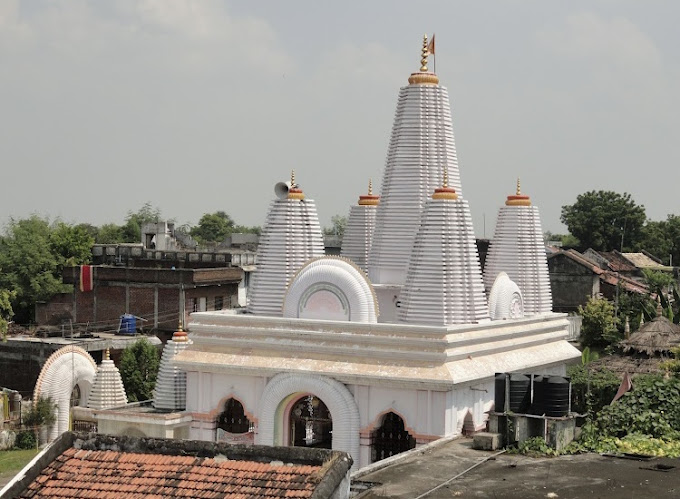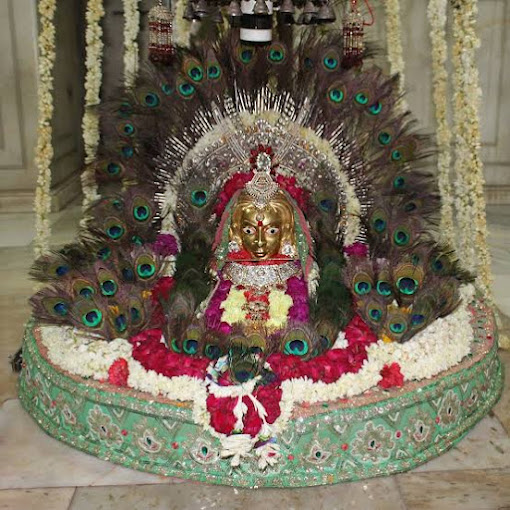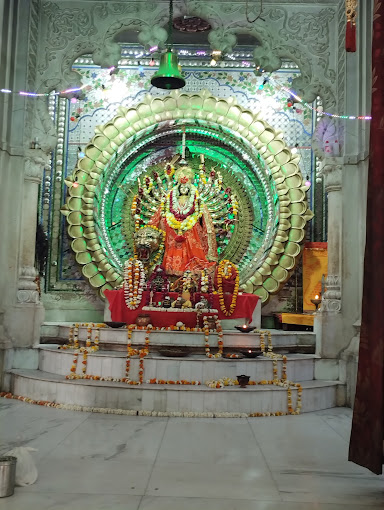Yogmaya (Jogmaya) Temple, New Delhi

Address
Yogmaya (Jogmaya) Temple, New Delhi
Yogmaya maa mandir, Seth Sarai, Mehrauli, Delhi,
New Delhi, Delhi 110030r
Amman
Yogmaya
Introduction
Yogmaya Temple, also Jogmaya temple, is dedicated to the goddess Yogmaya, also considered to be a sister of Krishna as she took avatar as Vindhyavasini, and situated in Mehrauli, New Delhi, India, close to the Qutb complex.
Puranic Significance
According to local priests and native records, this is one of those 27 temples destroyed by Mamluks and it is the only surviving temple belonging to pre-sultanate period which is still in use. King Samrat Vikramaditya Hemu reconstructed the temple and brought back the temple from ruins. During Aurangzeb’s reign a rectangular Islamic Style hall was added to the temple. Though it’s original (300-200 BC) architecture.
In 12th-century Jain scriptures, Mehrauli is also mentioned as Yoginipura, after the temple. The temple is believed to be built by the Pandavas, at the end of Mahabharata war.
The temple lies 260 yards from the Iron Pillar in the Qutb complex, and within the Lal Kot walls, the first fortress citadel of Delhi, constructed by the Tomar/Tanwar King Anangpal I around AD 731 and expanded by King AnangPal II in the 11th century who also constructed Lal Kot
Yogmaya or Jogmaya is considered, an aspect of Maya, the illusionary power of God. The temple is also venue of a large congregation of devotees during the Navratri celebrations. The present temple was restored in early 19th century and may be the descendant of a much older Devi shrine. Adjacent to the temple lies, a water body, johad, known as Anangtal Baoli, after King Anangpal Tomar, and covered by trees from all sides. The temple is also an integral part of an important inter-faith festival of Delhi, the annual Phool Walon Ki Sair.
Special Features
According to local priests and native records, this is one of those 27 temples destroyed by Mamluks and it is the only surviving temple belonging to pre-sultanate period which is still in use. King Samrat Vikramaditya Hemu reconstructed the temple and brought back the temple from ruins. During Aurangzeb’s reign a rectangular Islamic Style hall was added to the temple. Though it’s original (300-200 BC) architecture.
In 12th-century Jain scriptures, Mehrauli is also mentioned as Yoginipura, after the temple. The temple is believed to be built by the Pandavas, at the end of Mahabharata war.
The temple lies 260 yards from the Iron Pillar in the Qutb complex, and within the Lal Kot walls, the first fortress citadel of Delhi, constructed by the Tomar/Tanwar King Anangpal I around AD 731 and expanded by King AnangPal II in the 11th century who also constructed Lal Kot
Yogmaya or Jogmaya is considered, an aspect of Maya, the illusionary power of God. The temple is also venue of a large congregation of devotees during the Navratri celebrations. The present temple was restored in early 19th century and may be the descendant of a much older Devi shrine. Adjacent to the temple lies, a water body, johad, known as Anangtal Baoli, after King Anangpal Tomar, and covered by trees from all sides. The temple is also an integral part of an important inter-faith festival of Delhi, the annual Phool Walon Ki Sair.
Belief
It is believed that the main idol in the temple was that of Yogamaya (daughter of Yashoda), an incarnation of Durga, born as the sister of Krishna. Kansa, cousin of Devaki (mother of Krishna) and uncle of Yogamaya and Kansa attempted to kill Yogamaya on Krishna Janmastami day when Krishna was born. But Yogamaya, who was cleverly substituted for Krishna, vanished after predicting Kansa’s death at the hands of her brother Krishna. Later she reborn as Krishna’s younger sister Subhadra.



Festivals
Navratri
Century/Period
1827
Nearest Bus Station
Qutb complex
Nearest Railway Station
New Delhi
Nearest Airport
New Delhi




